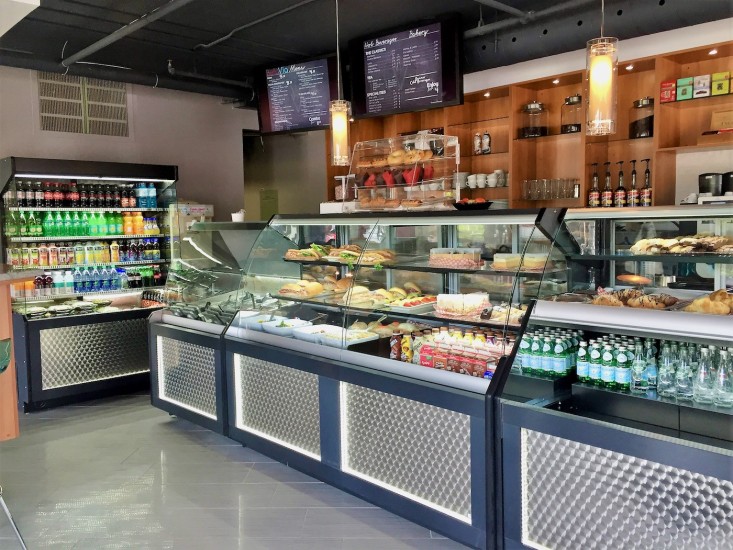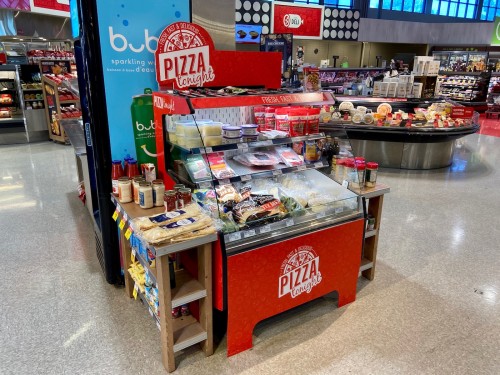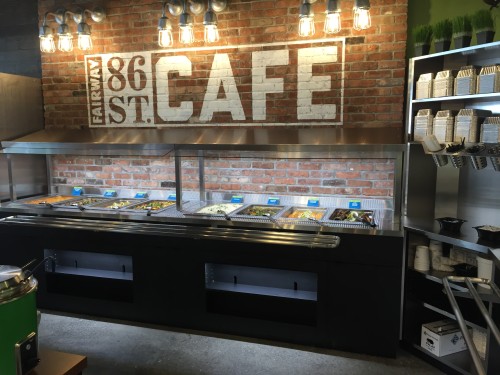Ever since March 2020, we’ve all been asking ourselves, “when will things get back to normal?” They likely won’t for a long time. Instead, I like to ask what I always like to ask, year after year — what does 2021 and 2022 have in store for food retail?
Two of my biggest questions are:
- Will food retail up their game in terms of providing restaurant quality flavour, taste, experience and convenience? (You have the value advantage!)
- What do supermarkets need to do to retain as much of that food dollar as possible as restaurants reopen?
To help answer these questions, here are three key trends collected from various industry sources. Here’s how food retail — and the foodservice offered by grocers — can (and will) emerge from the pandemic.
Trend 1: More people are eating at home.
Eating at home became the norm during COVID-19. With restaurants closed and more people working from home, it makes sense that more meals were happening there!
Multiple surveys recorded an uptick in the amount of families eating dinner together at home every single day since the pandemic began..
One survey found 31% of families have eaten dinner at home every day since COVID, compared to only 18% pre-pandemic. This shift has obviously significantly impacted the restaurant industry, with $240 billion in lost revenue and 110,000 restaurant closures in 2020, according to the National Restaurant Association.
But now, as more restaurants open up for dining out, the question is… how many people will continue to eat and prepare meals at home? And how will this affect sales in food retail?
Trend 2: Customers love to cook, but they don’t love to prep, plan or clean up.
Most people enjoy cooking. It’s a chore that can be fun — you can mix up ingredients, try a new spice or experiment with a new ethnic cuisine. So it stands to reason why there’s been a surge in home cooking since lockdowns started. Many of us were forced to stay at home more and go out less.
What most people don’t like is the prep work and cleanup involved in cooking — cutting vegetables, preparing sauces and washing all of the pots, pans and dishes. Some could also use a bit of help with recipe development and meal ideas.
FMI — The Food Industry Association’s 2021 “Power of Foodservice at Retail” report notes that there is “a move toward hybrid meals that allow people to prepare meals at home with a little help.”
A study from Deloitte on post-pandemic grocery trends notes:
- 66% of all respondents are cooking meals at home more than in the previous year
- 63% prepare dinner from scratch four to six times a week
- 85% spent more on fresh produce
- 79% spent more on plant-based milks and other non-dairy products
- 72% spent more on meat alternatives
- 40% are spending less on baked desserts, prepared ingredients and hot ready-to-eat meals
All of these statistics are revealing. Not only are more people cooking at home, they’re looking for fresher, healthier and more sustainable ingredients. They also want to reduce their food waste.
The key (and unknown) variable here is how much time grocery shoppers will have to cook at home as we emerge from the pandemic. This will depend on factors like the shift in how, where and when people do their work once the pandemic is over.
That’s where foodservice-at-retail comes into play. FMI’s latest report shows that more than a third of consumers don't recognize their local grocer as a foodservice option due to lack of menu choices, up slightly from the 2019 figures. Yet their cooking fatigue and time constraints are telling a different story.
Trend 3: Technology can be harnessed to make shopping easier. (Though it may take a while.)
Another theme in FMI’s “Power of Foodservice at Retail” is the use of technology among shoppers and grocers. More than half of survey respondents expressed a desire to order deli prepared items with a smartphone. Not surprisingly, younger consumers prefer using their phones or kiosks to order, compared to 89% of Baby Boomers who like to order from a person. (No surprise there!)
In addition, the survey from Deloitte notes that just 23% of respondents said they are satisfied with online delivery or pickup. That partly explains why so many customers prefer groceries in brick-and-mortar stores instead of online.
Canadian grocers did a lot of business online over the past year, but to keep that business they need to improve the customer experience. Assuming online business will simply move back in-store when the pandemic is over is dangerous. The online experience and the use of tech isn’t going anywhere. Grocers need to innovate if they want to retain their online profits.
While tech isn’t replacing brick-and-mortar, the two options can complement each other and create the ultimate shopping experience. The key is to find the balance.
Speaking of technology, one in 10 Canadians tried a meal-kit delivery service for the first time during the pandemic, and 65% of that group will continue to use meal-kit delivery in the next 12 months.
What does this mean for today’s food retailers?
My point of view is that grocers and food retailers are positioned to be the ultimate mealtime solution. Foodservice at retail can act as both a substitute for a cooked-from-scratch meal at home and a restaurant meal.
Cayuga Displays line of grab & go displays and hot/cold food bars are ideal for the grocer looking to retain their food dollar as restaurants open up again.
Want to find out more? Book a consultation with our team.



